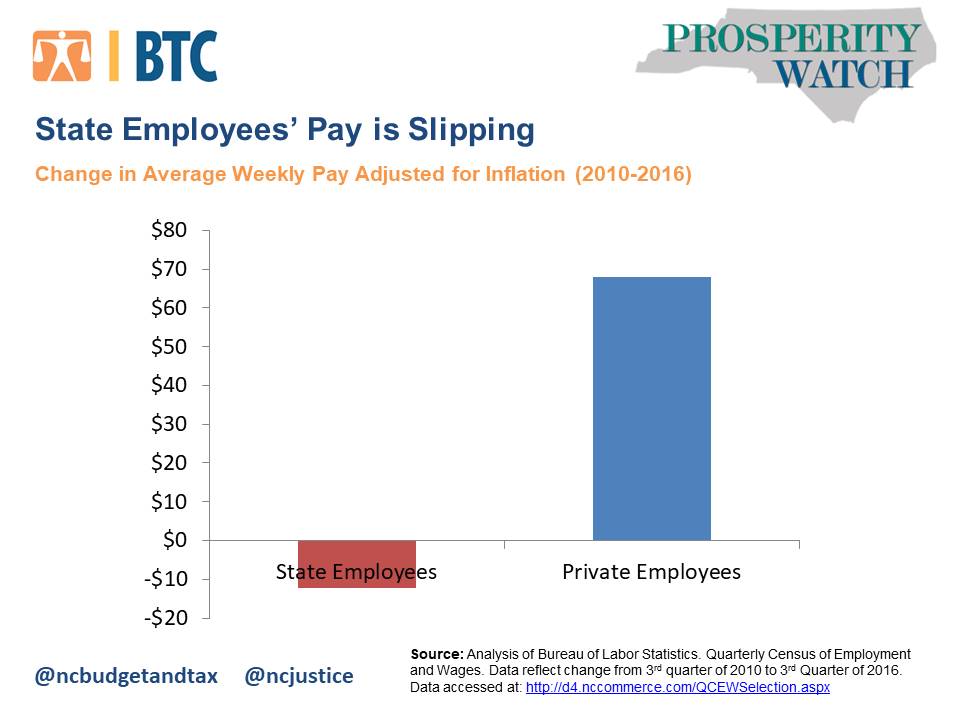Prosperity Watch (Issue 72, No. 4)
April 24, 2017
Many state employees have seen the buying power of their paycheck decline in recent years. Private sector wages have been slow to grow generally, but the stagnation in state employees’ wages is even more dramatic. This slow erosion in state wages is both putting a financial strain on working families, making it more difficult to retain highly qualified employees that we rely on for public services, and holding back the economy. State employees, like their peers in the private sector, spend and invest in their communities, generating the economic activity that sustains local business and helps make communities thrive.
Adjusting for inflation, state employee’s pay declined by roughly $12 per week from the 3rdquarter of 2010 until the 3rd quarter of 2016 (the most recent data available). As shown here, private wages increased by $67 per week over the same period. State employees on average are still paid slightly better than the average private sector worker, but that is mostly because the types of jobs that the state hires differ from the breakdown of private sector jobs. When comparing state employees to their direct counterparts in the private sector, many state employees are getting paid substantially less.
The 2016 Compensation and Benefits Report issued by the North Carolina Office of State Human Resources reports the difference in pay between state employees and private sector workers doing essentially the same jobs. Because it is not possible to directly compare every state employee’s job to a comparable private sector worker, the state tracks benchmark classes that do permit such a comparison. The report finds that roughly half of the state positions tracked are paid at least 10 percent less than their private sector counterparts. For example, state-employed vehicle and equipment repair technicians earned 11.5 percent less than their private-sector peers in 2015, executive assistants earned 15.6 percent less, paralegals earned 22.7 percent less, and psychologists earned 30 percent less.
Stagnate wages and better paying options in the private sector are making it increasingly difficult to retain skilled state workers. The Office of State Human Resources reports that turnover in state positions was nearly 12 percent for the 2014-15 fiscal year, up from 9.7 percent two years earlier. Nearly the entire amount of increased turnover resulted from a surge in state employees leaving their positions voluntarily, a strong sign that it is partially due to widening gaps in pay. Some of the occupations listed above with particularly large gaps between state and private sector pay had even higher turnover rates.
A lack of wage growth does not just create financial hardship for state employees. Increased turnover means more cost to find and train replacements. Losing knowledgeable state employees also makes it harder for state agencies to deliver many of the services that a healthy economy relies upon (e.g. efficient procession of permits, infrastructure improvements, quality education, etc.). While state employees and their families feel the pinch first, all North Carolinians will ultimately pay an economic price for allowing state pay to slip behind.
 Justice Circle
Justice Circle 
